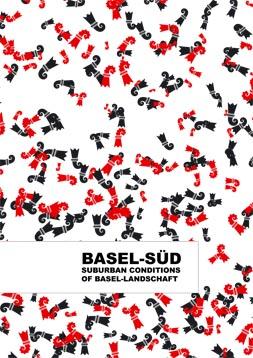BS/BL - Basel-Süd - suburban conditions of Basel-Landschaft

Students: Michael Buschor, Mulan Sun
Location: Group work in Basel
Date: January, 2007
Type: Research project, student work, living
In the year 1833 the unified Kanton Basel split into the ‚Halb-Kantone‘ of Basel-Stadt and Basel-Land. Seen as a traumatic event at its time, the separation was itself a small civil war, with military troops from the city occupying the ‚revolutionary‘ town of Liesthal, which was the base of the ‚rebels‘. Heavy fighting ensued, leading to the death of more than 100 Baslers on both sides. With the division into two half-cantons, the city of Basel not only lost all of its hinterland, but also two thirds of its wealth and financial assets. Consequently, with Liesthal now becoming the capitol of the secessionist canton, Basel Stadt and Basel Land both set up their own individual governments, which from then on handled all bureacratic and organizational work independently.
Since then, urban development of the two administrative entities has been following their own individual agendas, with only limited coordination. Especially around the turn of the century, during the time of rapid urban development and growth, the areas to either side of the cantonal boundaries were striving for diverse aims, resulting in disparate urban fabric along the common border, still detectable today.
One structure of analyzing the ways how Basel-Stadt and Basel-Land are joining in their physical fabric, is by looking at the four valleys that define that line of division, and give rise to four distinct urban patterns: Birsig, Birs, Ergolz and the Rhine. While the valley of the Birsig marks the canton division along a very residential and green part of the urban fabric, the Birs, which coincides to large parts with the administrative boundary, exhibits a shift from the urban to the infrastructural and the industrious, which is recognizable at the canton boundary along the Rhine. The valley of the Ergolz on the other hand, gives shape to the urban agglomeration of Basel-Land, similar in function to the valley of the Rhine for the larger metropolitan region of MetroBasel as a whole. Even though some of the differences noticeable in the urban fabric along the cantonal split are results of contingencies, different ideas of urbanity can be said to be underlying the distinct urban developments.
What are the different visions of urbanity, that gave rise to the contrasting urban fabrics, found along the cantonal borders? What role did planning methodologies and the diverse democratic institutions play, and how could we administer planning in the future on a cross-cantonal level? What would be the effect of a re-unified Kanton Basel on an urbanistic level?
Download the Book PDF

